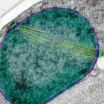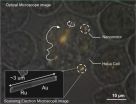(Press-News.org) An international team of scientists has produced global maps showing how fast and in which direction local climates have shifted.
In research published today in the journal Nature, CSIRO and an international team of scientists revealed global maps showing how fast and in which direction local climates are shifting. This new study points to a simpler way of looking at climatic changes and their likely effects on biodiversity.
As climate change unfolds over the next century, plants and animals will need to adapt or shift locations to track their ideal climate.
"The maps show areas where plants and animals may struggle to find a new home in a changing climate and provide crucial information for targeting conservation efforts," CSIRO's Dr Elvira Poloczanska said.
The study analysed 50 years of sea surface and land temperature data (1960-2009) and also investigated two future scenarios for marine environments ('business as usual' and a 1.75°C temperature increase).
The new maps show where new thermal environments are being generated and where existing environments may disappear.
"The maps show us how fast and in which direction temperatures are shifting, and where climate migrants following them may hit barriers such as coastlines. Our work shows that climate migration is far more complex than a simple shift towards the poles," ecological geographer with the project Kristen Williams said.
"Across Australia, species are already experiencing warmer temperatures. In terrestrial habitats, species have started to seek relief by moving to higher elevations, or further south. However, some species of animals and plants cannot move large distances, and some not at all."
Species migration can have important consequences for local biodiversity. For example, the dry, flat continental interior of Australia is a hot, arid region where species already exist close to the margin of their thermal tolerances.
Some species driven south from monsoonal northern Australia in the hope of cooler habitats may perish in that environment.
"In the oceans, warming waters and a strengthening of the East Australian Current have mobilised the Long-spined Sea Urchin (Centrostephanus rodgersii), previously only found as far south as southern NSW, to invade the eastern Tasmania coast. This has resulted in the decline of giant kelp forests with knock-on effects for commercially-fished rock lobsters," Dr Poloczanska said.
CSIRO and University of Queensland's Anthony Richardson said the study cannot be used as a sole guide as to what to do in the face of climate change.
"Biological factors such as a species' capacity to adapt and disperse need to be taken into consideration," Professor Richardson said.
"But in an unprecedented period of climate change, economic development and fast growing demand on an already pressured planet, we need to act fast to make sure as much of the world's living resources survive that change."
INFORMATION:
The study was undertaken by CSIRO's Dr Elvira Poloczanska and Associate Professor Anthony Richardson and Dr Kristen Williams with a team of 18 international researchers from Australia, Canada, Germany, Spain, UK and USA.
New maps reveal locations of species at risk as climate changes
2014-02-10
ELSE PRESS RELEASES FROM THIS DATE:
JCI early table of contents for Feb. 10, 2014
2014-02-10
Researchers identify unique regulatory T cell population in human skin
Regulatory T cells (Tregs) dampen the immune response against self antigens and contribute to the prevention of autoimmunity. A skin-specific population of Tregs (mTreg) has been described in mice that has properties similar to memory T cells. In mice, some mTregs are maintained in the skin for long periods of time and suppress cutaneous autoimmunity. In this issue of the Journal of Clinical Investigation, Michael Rosenblum and colleagues at the University of California San Francisco analyzed the mTreg ...
Obesity, type 2 diabetes epidemics spreading to developing world as more own TVs, computer
2014-02-10
Lower income countries may soon be facing the same obesity and diabetes epidemics as their higher income counterparts. Ownership of televisions, cars and computers was recently found to be associated with increased rates of obesity and diabetes in lower and middle income countries, according to an international study published in CMAJ (Canadian Medical Association Journal).
"Although we found no trend between household devices ownership and obesity or diabetes in high income countries, there was a stronger relation as the level of country income decreased. This relation ...
Supreme Court of Canada ruling on life support has wider impact: Hassan Rasouli
2014-02-10
In the debate over whether to withdraw life support for patients who have no hope of recovery, the recent judgment by the Supreme Court of Canada on the Hassan Rasouli case in Ontario has broader implications for health care in the country, argue authors in a commentary in CMAJ (Canadian Medical Association Journal).
The Supreme Court of Canada ruled in October 2013 that physicians who recommend withdrawing life support over the wishes of substitute decision-makers must apply to Ontario's Consent and Capacity Board, "regardless of whether they feel ongoing treatment falls ...
Researchers call for more study into impact of repetitive heading in soccer
2014-02-10
TORONTO, Feb. 10, 2014—Soccer is the most-popular and fastest-growing sport in the world and, like many contact sports, players are at risk of suffering concussions from collisions on the field.
But researchers warned in a paper published today that not enough attention has been given to the unique aspect of soccer – the purposeful use of the head to control the ball – and the long-term consequences of repetitive heading.
The literature review by Dr. Tom Schweizer, director of the Neuroscience Research Program of St. Michael's Hospital, was published in the journal ...
Conserved nuclear envelope protein uses a shuttle service to travel between job sites
2014-02-10
KANSAS CITY, MO—Researchers at the Stowers Institute for Medical Research have glimpsed two proteins working together inside living cells to facilitate communication between the cell's nucleus and its exterior compartment, the cytoplasm. The research provides new clues into how a crucial protein that is found in organisms from yeast to humans does its work.
The study, led by Stowers Investigator Sue Jaspersen, Ph.D., focused on a protein called Ndc1, which controls when and where a cell inserts holes into the double-walled membrane that surrounds its nucleus. In yeast, ...
Weakness exposed in most common cancer gene
2014-02-10
NYU Langone Medical Center researchers have found a biological weakness in the workings of the most commonly mutated gene involved in human cancers, known as mutant K-Ras, which they say can be exploited by drug chemotherapies to thwart tumor growth.
Mutant K-Ras has long been suspected of being the driving force behind more than a third of all cancers, including colon, lung, and a majority of pancreatic cancers. Indeed, Ras cancers, which are unusually aggressive, are thought of as "undruggable" because every previous attempt to stall their growth has failed.
Reporting ...
Transcendental Meditation significantly reduces PTSD in African refugees within 10 days
2014-02-10
African civilians in war-torn countries have experienced the threat of violence or death, and many have witnessed the abuse, torture, rape and even murder of loved ones. Many Congolese living in Ugandan refugee camps are suffering from severe posttraumatic stress disorder (PTSD).
New research shows that Congolese war refugees who learned the Transcendental Meditation® technique showed a significant reduction in posttraumatic stress disorder in just 10 days, according to a study published today in the February 2014 issue of the Journal of Traumatic Stress (Volume 27, ...
Nanomotors are controlled, for the first time, inside living cells
2014-02-10
For the first time, a team of chemists and engineers at Penn State University have placed tiny synthetic motors inside live human cells, propelled them with ultrasonic waves and steered them magnetically. It's not exactly "Fantastic Voyage," but it's close. The nanomotors, which are rocket-shaped metal particles, move around inside the cells, spinning and battering against the cell membrane.
"As these nanomotors move around and bump into structures inside the cells, the live cells show internal mechanical responses that no one has seen before," said Tom Mallouk, Evan ...
Matchmaking this Valentine's Day: How it can bring you the most happiness
2014-02-10
Austin – February 10, 2014 – With Valentine's Day around the corner, you may be thinking of pairing up two friends for a date. If you follow your instinct to play Cupid, it'll pay off in happiness – not necessarily for the new couple, but definitely for you.
According to new research, matchmaking, a time-honored tradition, brings intrinsic happiness to the matchmaker. To maximize the psychological benefits of matchmaking, you should take care to introduce two people who not only seem compatible but who would be unlikely to meet otherwise, researchers say.
"At some point, ...
Genetic discovery to keep crops disease-free
2014-02-10
Curtin University researchers have found a way to breed disease-resistant wheat with no downside, potentially bringing multi-million dollar savings to Australia's agricultural industry.
According to John Curtin Distinguished Professor Richard Oliver, Director of the Australian Centre for Necrotrophic Fungal Pathogens (ACNFP) at Curtin, farmers can lose more than 0.35 tonnes per hectare in wheat yields to Yellow Spot, even after applying fungicide.
For an average-sized farm of 4000 hectares, this could mean an almost $500,000 loss to disease per year – or about $212 ...



